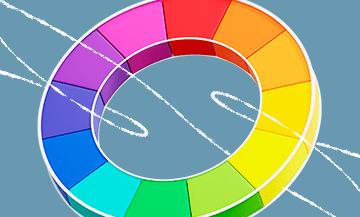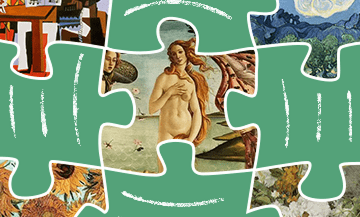Art follows its own laws and rhythm. And this naturally leads to the question: how much time does it actually take to complete a painting so that every drop of paint finds its place and embodies the essence of the artistic concept?
Let’s dive into the world of creativity and explore how many days can be spent painting with oil, and what this process reveals about the artistic inspiration and patience of the artist.
Factors influencing the speed of oil painting
How long will it take you to paint your picture? It depends not only on time but also on the individuality of the artist, the nature of the chosen technique, and even inspiration.
Main factors:
- Size and format: the size of the painting matters, determining not only the physical dimensions but also the time required to complete the work.
- Artist’s style: energetic brushstrokes or meticulous detailing? The speed of painting is influenced by the artist’s individual style, their searches, and experiments.
- Technique: from playing with light and shadow to impasto technique — the chosen technique leaves its mark on the creative process.
- Experience and skill: the more experienced the creator, the more confidently and quickly they realize their vision on the canvas.
- Layer drying: each layer of paint requires drying time, which slows down the process and introduces pauses in the creation of the work.
- Additional features: even inspiration and mood affect the pace of creative work and its artistic realization.
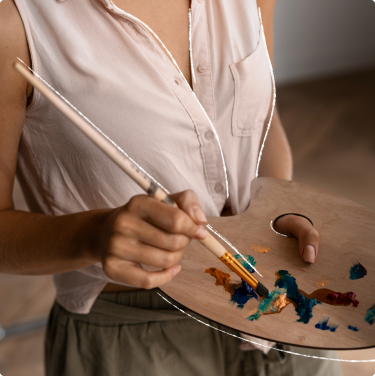
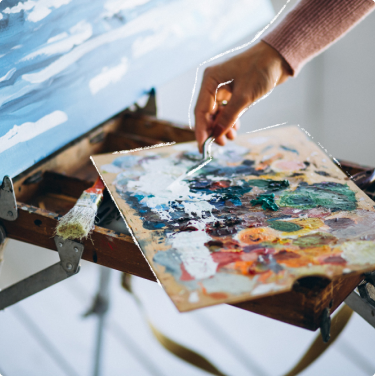
And preparation for creativity is quick and easy. In specialized stores, it’s easy to find everything you need: paints, solvents, various brushes, as well as ready-made canvases.
The main thing is to start painting. Find a comfortable place, set yourself up comfortably, prepare all the necessary materials for painting, choose an interesting subject and method of execution — the first step begins with preparatory work.
The speed of painting in different oil painting techniques
It’s important to understand the techniques of oil painting, and there are many, but four main ones:
- One-layer (Alla Prima). This technique allows for the creation of an oil painting quickly and skillfully. The artist makes a sketch with charcoal on the canvas and then begins working with paints. A one-layer canvas can be completed in just a few hours, as the artist does not let the paint dry, actively blending shades directly on the surface. This method does not require detailing; instead, the artist conveys emotions and feelings that arise directly in the process of creativity.
- Multi-layered. This painting technique involves using at least two layers of paint. It starts with applying a base coat with diluted paints. This layer allows the artist to correctly place accents on the canvas, refine proportions and details.
After the first layer has completely dried, the artist moves to the second stage — highlighting details for maximum visual cohesion of the canvas. Here it is advisable to do the main work, as the adhesion strength of each subsequent layer of paint to the previous one begins to decrease.
To highlight details, the artist may use a brush or palette knife — a tool that creates a complex texture of paint on the surface of the painting and a rich color range. For example, if the artist is painting a landscape, the palette knife will make the painting more expressive and emotional. - Paste Technique (Impasto). This method involves applying paint in thick layers, giving the canvas a relief texture. Artists working in this style often prefer the palette knife over the brush, which helps to expressively highlight the form and texture of the depicted objects.
- Glazing Technique. Finally, the glazing technique involves covering the canvas with a base color and then applying well-diluted paint in several layers. This method achieves richer and more translucent shades, creating a “smooth” image.
Such paintings are created by masters over many years, as it is important to pay special attention to each detail through the careful application of thin layers of paint.
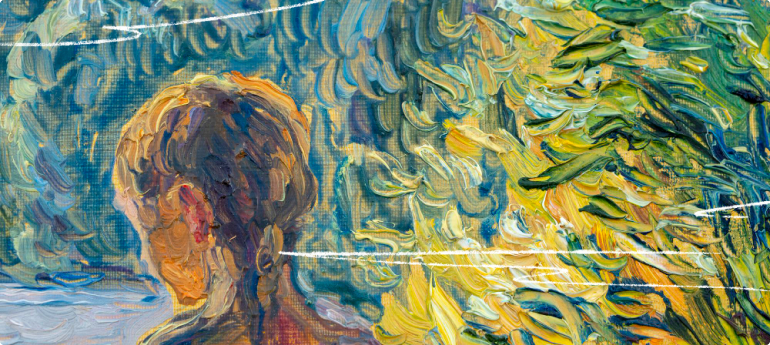
Overall, the more detail, layers, and shadows you work into your painting, the more time it takes. This is why paintings in the realism genre often take much longer to create than those in abstract genres, where complete freedom of expression is allowed.
And let’s not forget about the artist themselves. Some create their works in a few days, while others may take several months. Creativity is an individual process, and there are no strict limits or schedules for how long it takes to paint a particular piece.
Speed of painting in different sizes
In the creative world, time has its own unique structure, and for artists, every minute on canvas is an opportunity to realize their ideas. However, how can canvas size affect drawing speed?
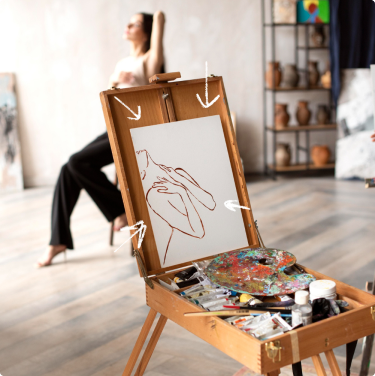
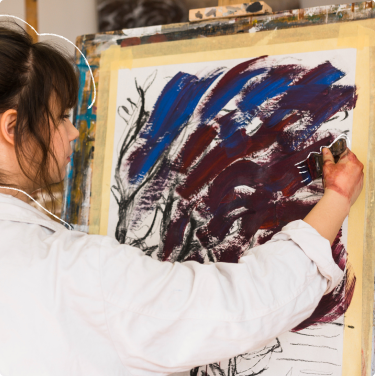
- Small Formats: A small canvas is a sort of microcosm where the artist is forced to express ideas within a limited space. Such formats often require quick reactions and immediate realization of ideas. Small paintings are often saturated with emotions captured on canvas in the literal sense of the moment—here and now.
- Medium Sizes: A medium canvas gives the artist more space for detailing while maintaining a relatively fast pace of work. In this case, the painting process becomes a balance between expressiveness and the ability to incorporate more thoughtfully considered elements into the work.
- Large Formats: Working on a large canvas is a true creative undertaking. An artist working in this format must spend more time on each detail. Large paintings become not only the result of the creative process but also a reflection of the time and effort invested in their creation.
By the way, some painting masters prefer to experiment with unconventional formats, combining different sizes in one project. This way, they blend the emotionality characteristic of small formats with the depth and detail of large works.
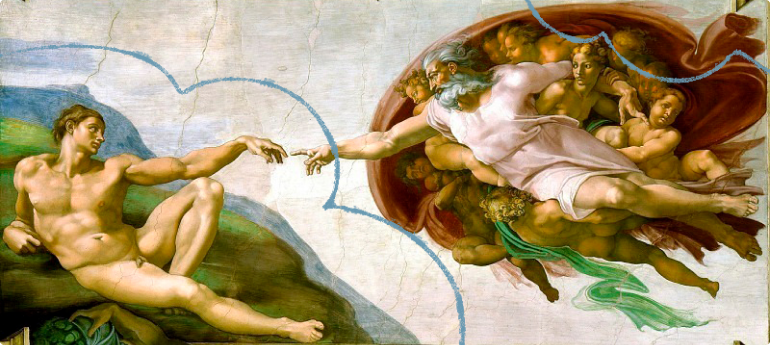
The speed of painting by novice artists
Beginners require more time for the creative process compared to experienced artists. Experience and skill contribute to speed and high quality of execution, and repeated practice of various painting techniques makes the result not only predictable but also quickly achievable.
An experienced artist can easily plan each stage of painting, masterfully transitioning from step to step. On the other hand, a beginner may face unexpected technical difficulties, and sometimes the realization of their vision does not come easily at first.
Thus, the more practice an artist gets, the faster they develop their skills while maintaining the quality of their work.
If you are a beginner,
💡 focus on the basics of painting — perspective, composition, color theory. A good understanding of the basics will help you create quality work faster and expand your creative boundaries.
💡 don’t be afraid to try new materials and techniques. Experimentation helps you find your own artistic style and approach to creativity.
💡 analyze the works of famous artists. Draw inspiration from others’ achievements and learn from the best.
💡 carry a sketchbook and jot down all your ideas.
💡 And, of course, don’t be afraid to step out of your creative comfort zone. You’ll soon notice that you paint much faster without getting stuck wondering why something isn’t working or progressing.
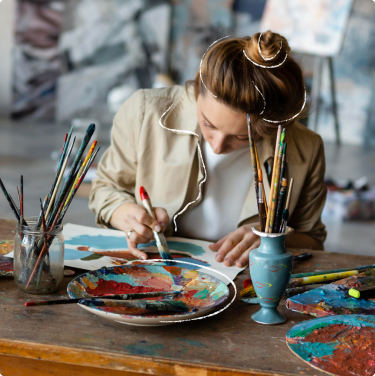
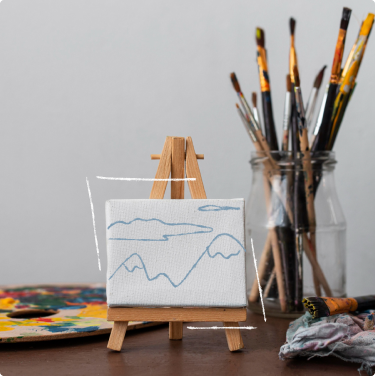
The speed of painting by professional artists
Professional masters amaze with their ability to create high-quality works in surprisingly short periods. This is all thanks to their experience. Master painters can literally see their work in their mind and instantly bring it to life on the canvas.
The secret is that professionals make decisions quickly and experiment while simultaneously ensuring the quality of their work. They have already mastered materials and techniques to perfection and don’t waste time starting from scratch.
Before picking up the brushes, professionals have carefully studied composition, color theory, and painting forms. As a result, they produce beautiful, captivating paintings that engage both attention and our minds.
However, the speed of painting depends on each specific case. Sometimes an artist can literally “capture” a moment and convey it on canvas in a matter of hours. At other times, there may be stagnation where the creative process seems to go nowhere, leaving the canvas blank…
Overextending the painting process is also not advisable. No one will wait years for a modern artist’s painting (especially if you have an upcoming exhibition).
The best approach is a golden mean. Consider your experience, skills, and the subject of the painting in advance and get started. The sooner you begin creating, the sooner you will achieve results.
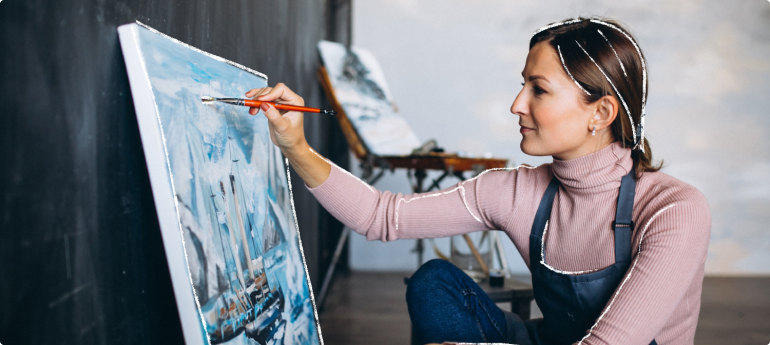
Interesting Facts About Other Artists
 💡 Leonardo da Vinci
💡 Leonardo da Vinci
Leonardo da Vinci, who embodied the splendor of the Renaissance in his works, was known for his meticulous approach to the creative process.
His masterpiece “The Last Supper” took a full 3 years to complete, with each apostle being meticulously and skillfully worked out. Da Vinci emphasized the importance of observing the surrounding world, which made his works unique.
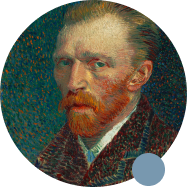 💡 Vincent van Gogh
💡 Vincent van Gogh
Van Gogh, whose style epitomized passion and expression, amazed with his ability to quickly translate emotions onto canvas. The famous “Starry Night” was created in just a few days in June 1889. Van Gogh, with his tumultuous temperament, preferred to work in a highly charged state and very quickly.
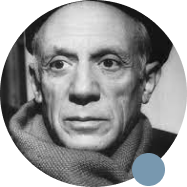 💡 Pablo Picasso
💡 Pablo Picasso
A prominent figure of Cubism and Surrealism, Picasso was known for his extraordinary ability to rapidly shift styles. His famous “Guernica” was revealed to the world just a few months after the bombing of the eponymous city in 1937. Picasso brilliantly combined creativity with social response, understanding that sometimes it is simply unacceptable to delay.
Although the time spent creating a work of art varies for each artist, what they all share is the desire to express their unique vision of the world.
Great artists transcend time, creating paintings that live forever.
Question-answer
- Canvas size: large paintings generally require more time.
- Complexity of execution: if your abstract painting contains many details, complex lines, or subtle shades, it may take more time.
- Technique: different artistic techniques may require different amounts of time. For example, the “glaze” technique (applying oil in thin layers) takes more time than spontaneous and broad brushstrokes.
- Artist’s experience: experienced masters can work more efficiently and quickly due to their experience and skills.
- Oil drying time: oil paints usually require time to dry between layers, which can also affect the overall time of the work.
Typically, creating an oil portrait also takes from a few hours to several months. Some artists prefer to work on a portrait gradually and conduct multiple sessions to achieve the desired result, while others work on the project all at once and finish it within a relatively short period.
If the portrait depicts several people, it increases the overall time of the work. As with abstract paintings, oil paints require time to dry between layers, which can slow down the process.
Additionally, some clients may have specific requirements for the portrait, which requires extra time for consultations and making adjustments.
- Consider why you can’t finish the painting. You might be lacking inspiration or unsure about which details to add. Understanding the reason is the first step to overcoming creative block.
- Set yourself sequential tasks. Break your project into smaller stages. For example, start with a sketch, then add colors or basic shapes. Dividing the process will help overcome the feeling that completing the painting is far off.
- Push yourself. Set deadlines for each stage of the work. This will make it easier to move forward. Use a timer or calendar to keep yourself on track.
- Set creative limitations. Sometimes too many options can lead to creative paralysis. Try limiting yourself by using certain colors, techniques, or styles.
- Find inspiration. If you feel stuck on the project, take a creative break. Visit a museum, read a book, take a walk in the park, or talk to other artists.
- Accept yourself and your work. A painting should not be viewed as a perfect work of art; it is a reflection of your creativity at a specific period of time. Accepting imperfections and incompleteness can help you rethink your project and find new ideas.
- Get feedback or help from others. Show your unfinished work to other artists or friends and ask for their opinions. They might see something you missed or offer new ideas. Collaborative creativity and constructive feedback are powerful sources for overcoming difficulties.
Yes, you can. If you are varnishing the painting, it is generally recommended to wait at least a few weeks (or preferably a month to a month and a half) to ensure that the paints are completely dry. Otherwise, the varnish may seal moisture inside the paint layers, leading to problems such as bubbling or loss of transparency.
It is important to ensure that the solvent in the varnish does not dissolve the upper paint layers during application. One thin layer of varnish usually does not cause cracking, as its tension strength is insufficient to create cracks and breaks in the oil paint.



